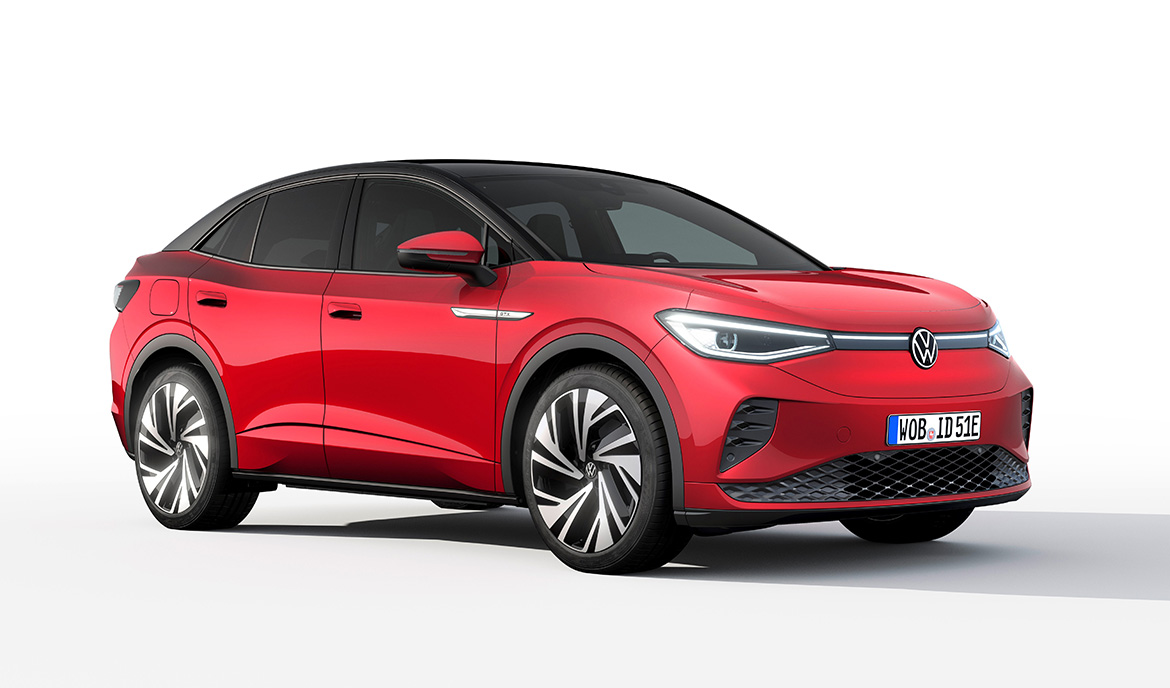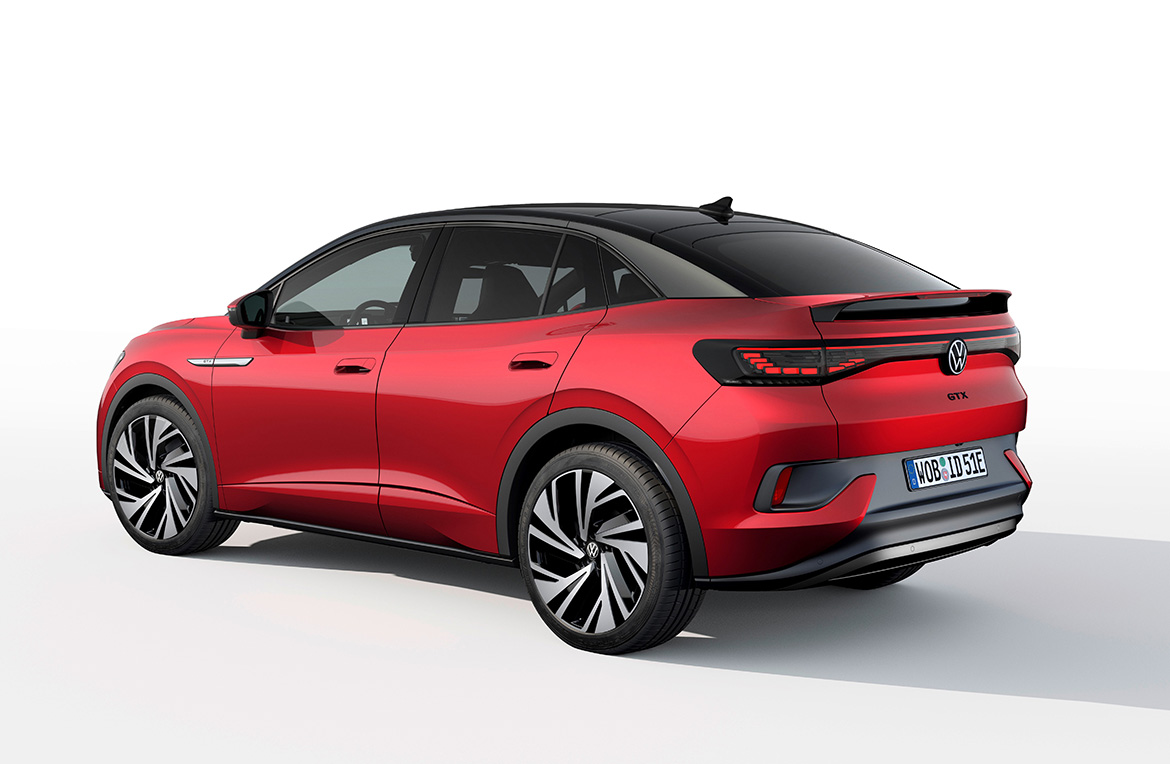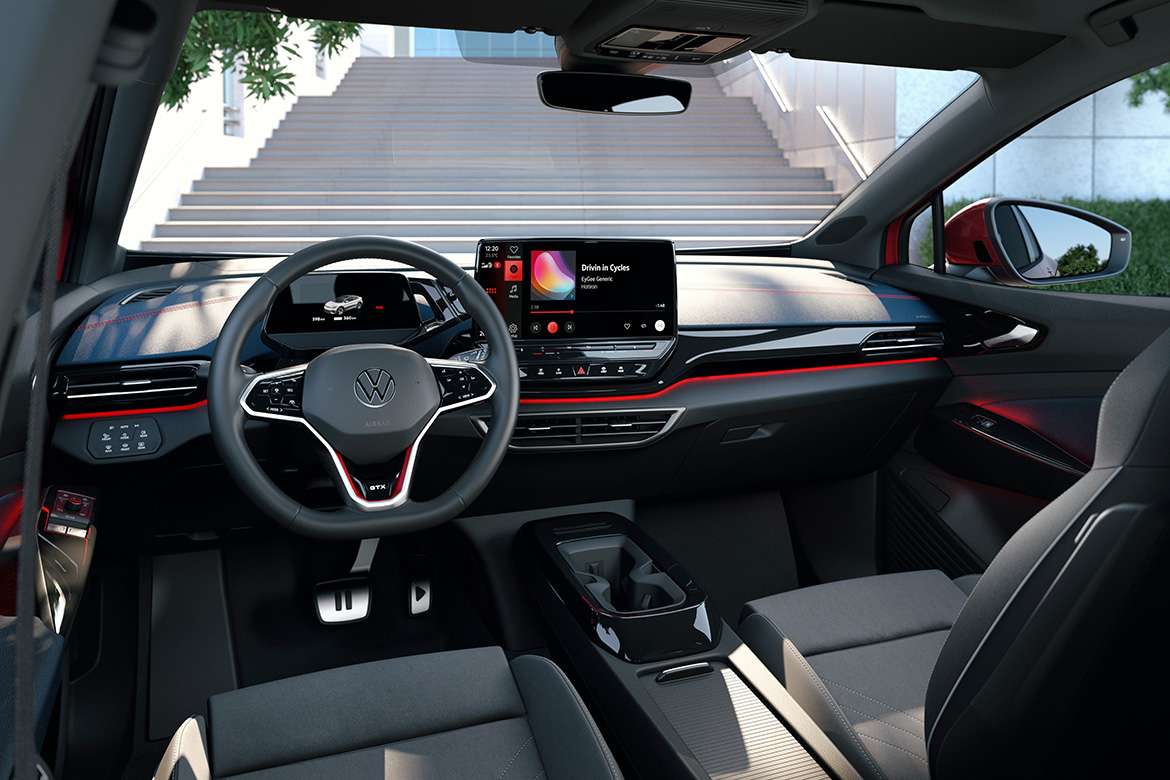A little bit Suv, a little bit coupe. Volkswagen presented the ID.5, Suv coupe and third member of the ID family (after ID.3 and ID.4), that of the German manufacturer’s electric cars built on the Meb platform specific for zero-emission models of the group. A close relative of the ID.4, the ID.5 was also unveiled in the GTX sports version characterized by all-wheel drive and a powertrain with two motors for a total power of 220 kW. The front end of the ID.5 stands out for a certain muscularity of lines, defined by the Volkswagen style center directed by Jozef Kabaň. The air intake of the top of the range ID.5 GTX gives the model a more vigorous character for general athletic lines accentuated by short overhangs and large wheels.
With a length of 4.6 meters, a width of 1.85, a height of 1.6 and a wheelbase of 2.7 meters, the ID.5 has been designed with aerodynamic efficiency in mind, and the result achieved by the designers was a Cd of 0.26. The determining factor that has allowed to obtain good aerodynamic characteristics is the basic shape of the body, with the greenhouse that gently descends towards the rear going gradually to tighten. The wind in gear passes over the rear window, goes around the spoiler and crosses it only later in the area below. Even the ID.5’s flush recessed door handle is designed for low-loss air passage. The same applies to the flat-designed wheels. The rear area is characterized by horizontal lines, the most pronounced of which is the light band, that draw attention to the width of the car.
The interior of the ID.5 takes up the general styling of its cousin ID.4. The designers have reduced the number of physical buttons in favor of two displays for instrumentation (5.3 inches) and infotainment (12 inches). Upholstery materials vary depending on the trim chosen, but all are free of animal products. Cloth is standard, while the ID.5 GTX’s seats feature a combination of cloth and leatherette. Depending on the equipment, the center strips are upholstered in the microfiber material ArtVelours, which contains a proportion of recycled materials, for example PET bottles.













